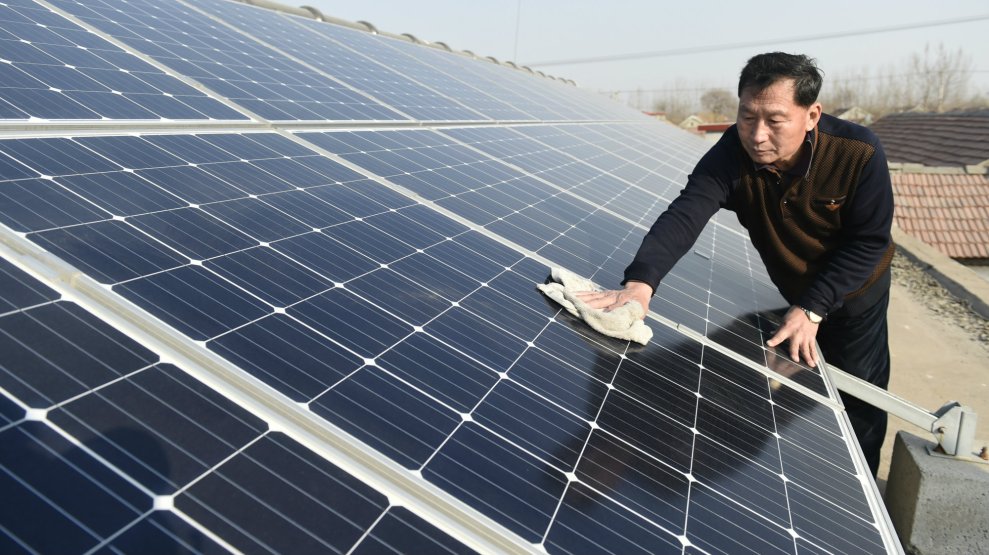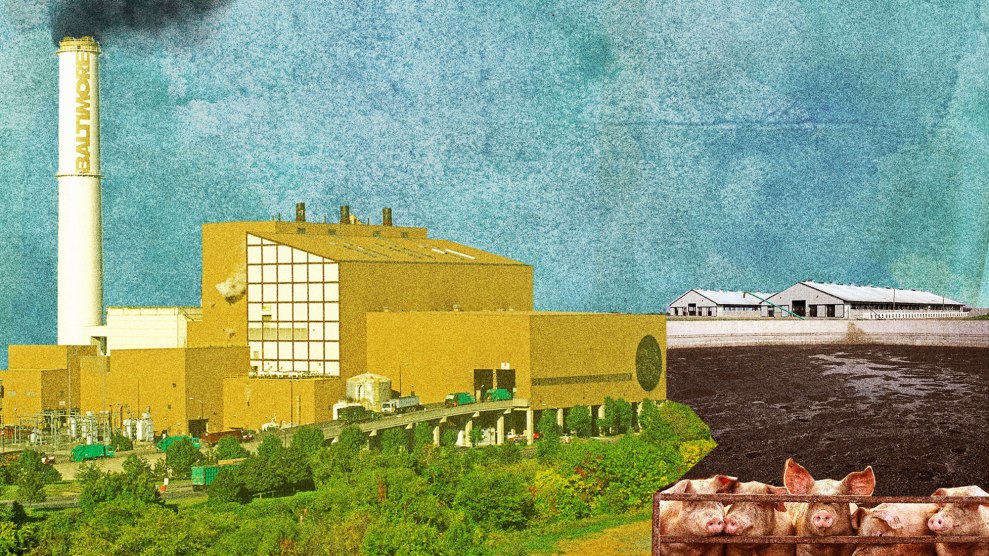
Grist/Fertnig/Robert Newton/EyeEm/Visions of America/UIG/Getty Images
This story was originally published by Grist. It appears here as part of the Climate Desk collaboration.
Drive down Interstate 95 through Baltimore and you can’t miss the Wheelabrator trash incinerator, its smokestack emblazoned with the city’s name. The Charm City’s single largest source of industrial air pollution churns out well over 600,000 metric tons of carbon dioxide annually.
In 2017, those emissions were equivalent to what’s given off by more than 130,000 cars driven for a year. It is also one of Maryland’s major sources of nitrogen oxides—a principal component of smog. One analysis estimates the facility’s air pollution kills an estimated 5.5 people per year.
James Alston is a resident of the South Baltimore neighborhood of Westport. He resides roughly five blocks from the incinerator in a home his family has lived in since 1967. From his front porch, the smokestack is clearly visible. On bad days, he says, a rancid, overpowering odor wafts over from the facility to his community. When he learned how much pollution comes from the Wheelabrator site—and its potential health impacts—he thought of neighbors who had died. Could they have lived longer lives if it weren’t for the facility?
“They’re here, and they pollute, and from what I gather, they don’t care,” Alston says. He wants the facility out of the majority-black community. “It’s environmental racial injustice as I see it,” he adds.
In the eyes of the state though, the energy Wheelabrator creates from burning as much as 2,250 tons of trash each day is considered renewable. Thus, the company gets subsidies—an estimated $3.4 million in 2015—from utility companies and ratepayers as a result of the state’s renewable energy policy.
In a statement to Grist, Wheelabrator says the facility “adheres and exceeds strict federal and state air regulations established by both the U.S. Environmental Protection Agency and the Maryland Department of the Environment.”
Trash incineration isn’t the only polluting industry that Maryland considers a renewable energy source. Poultry litter incineration and paper mill waste burning are also lumped in alongside wind and solar energy, according to the state’s plan.
Maryland’s not alone in ranking some surprising sources of energy as renewable. The state of Oregon set a goal that by 2040, 50 percent of the energy generated by large investor-owned utilities should be renewable—and that includes incentivizing energy from manure digesters and burning wood.
In 29 states plus the District of Columbia, policies like these that are termed “renewable portfolio standards”(RPS) set benchmarks that stipulate what percentage of the state’s energy should be generated from renewable sources. When most people think of “renewables,” they picture sources like solar and wind. But the nonprofit Food and Water Watch analyzed the 30 policies across the country and found that every one also included “dirty” sources such as mill residue, wood, waste incineration, and waste-methane burning. Some of these generation processes emit large amounts of carbon dioxide, and many release other pollutants.
“These states sort of fudge renewable by saying, ‘You know, there’s always going to be trash, so of course it’s renewable,’” says Liz Nussbaumer, Food and Water Watch senior researcher and co-author of the organization’s recent report. “It’s a regenerating source of energy. But as far as it being clean, that’s absolutely not the case.”
For right now, the definition of “renewable” is surprisingly subjective, experts say. “There’s no sort of industry standard definition,” says Galen Barbose, a research scientist at the Department of Energy’s Lawrence Berkeley National Laboratory (LBNL). “It’s kind of in the eye of the beholder, I guess.” As a result, a policy intended for environmental benefits doesn’t always quite achieve those goals.
Renewable portfolio standards started cropping up in the ’90s, Barbose says—and because states create their own policies, each is somewhat different. Some are guided by incentivizing job creation. Others seek to promote energy independence or slash emissions, explains Jeff Deyette, director of state policy and analysis for the Union of Concerned Scientists, a nonprofit that uses research to advocate for environmental issues.
In each of these standards, the state announces target amounts of energy—typically expressed as a percentage of the total energy provided by electricity suppliers—that must be generated from renewable sources, as well as dates for each of those targets to be met. Every state’s RPS policy is different, but many include less-than-clean sources that create pollution that can damage the environment and people’s health.
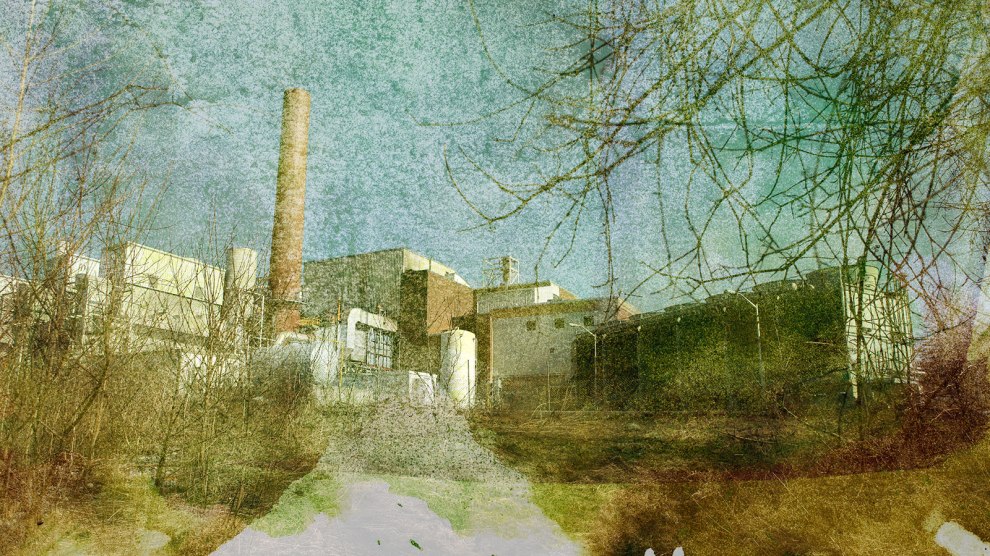
More than 30 states categorize garbage incineration as a type of renewable energy.
Grist/AP Photo/Carolyn Kaster/File
Maryland and many other states rank their renewable sources in tiers, with the top tier being the “more preferred” sources, Barbose says. Incineration is in the top tier of Maryland’s standards, and in 2015 made up about 9 percent of the tier-one credits used to fill the state’s requirement, according to a state Public Service Commission Report. “I’m not aware of any other states that allow municipal solid waste as a tier-one resource,” says Barbose.
In the majority of trash incineration plants, garbage is burned at high temperatures, heating water to create steam to power a turbine and provide electricity. Incinerators that burn only fossil fuel-derived products, such as plastics, generate less carbon dioxide than natural gas plants and roughly half that of coal-fired plants.
However, incinerators that also burn organic material (food waste, diaper contents, etc.) actually generate more carbon dioxide than coal does to produce the same amount of energy. Across the United States, organic material fuels about half the total electricity created by municipal solid waste incinerators, according to the Energy Information Association. (When asked what portion of waste Wheelabrator Baltimore burns is organic and what portion is fossil-fuel based, the company declined to answer.)
In addition, although waste incinerator emissions have decreased significantly since the 1990s, in response to Clean Air Act regulations, they still pump pollutants like mercury, particulate matter, and carbon monoxide into the air. Wheelabrator Baltimore, for example, emits lead, which is implicated in a host of health effects, including developmental delays in children, and methane, a more potent greenhouse gas than carbon dioxide. A 2006 EPA analysis found that in 2000, incinerators were the fourth-largest source of dioxins, highly toxic substances that the agency says can cause cancer.
For those reasons, not every state welcomes garbage burners: Waste-to-energy giant Covanta applied to New York state in 2011 to get incineration into the RPS. The state Department of Environmental Conservation reminded the company that it decided not to include incineration in the RPS when the state’s policy was first created in 2004 because a few years prior, New York trash incinerator facilities were found to release six times the amount of mercury as the average coal-fired power plant.
In the state of North Carolina, energy created from poultry and swine waste is also considered renewable. This can mean burning poultry droppings for energy and capturing methane from lagoons of pig excrement. Those sources are a small fraction of the portfolio, according to Sanya Carley, an associate public professor at Indiana University-Bloomington’s School of Public and Environmental Affairs. But, she says, “They do want the state to make sure that they develop that in conjunction with wind and solar.”
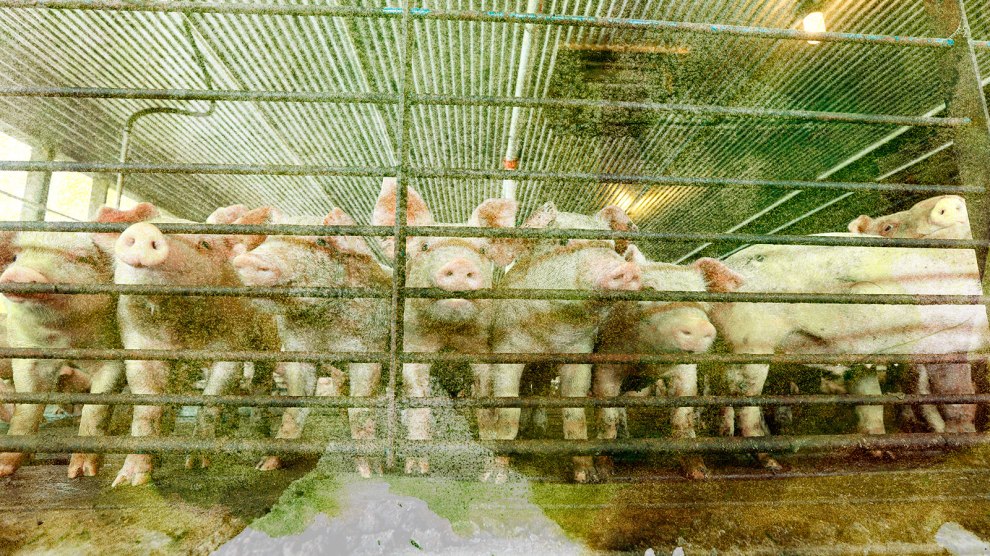
North Carolina—a major swine-producing state—includes capturing methane from pig waste in its renewable portfolio standards.
Grist/AP Photo/Gerry Broome/File
Back to Maryland, where the state relies upon another unconventional energy source to fulfill its renewable requirements: “black liquor,” the byproduct of industrial paper production. Black liquor made up nearly 30 percent of the state’s total tier-one credits in 2015, outpacing wind (which made up only 23 percent).
Luke Mill in Appalachian Maryland, for example, makes paper and burns black liquor for energy. It also released more than a million tons of CO2 in 2016. Burning black liquor for energy results in the emission of greenhouse gases, nitrous and sulfur oxides, particulate matter, and more, says the Energy Information Administration.
According to experts who study renewable portfolio standards, enacting these policies has generated real environmental benefits.
About half of the increase nationwide in renewable energy generation and capacity since 2000 was helped along by these pieces of legislation, according to Barbose’s LBNL report. Even though some of the renewables included in some RPS policies are by no means clean, the sources are legitimately renewable, unlike the fossil-fuel burning plants they replace. And, of course, the standards also subsidize wind and solar energy.
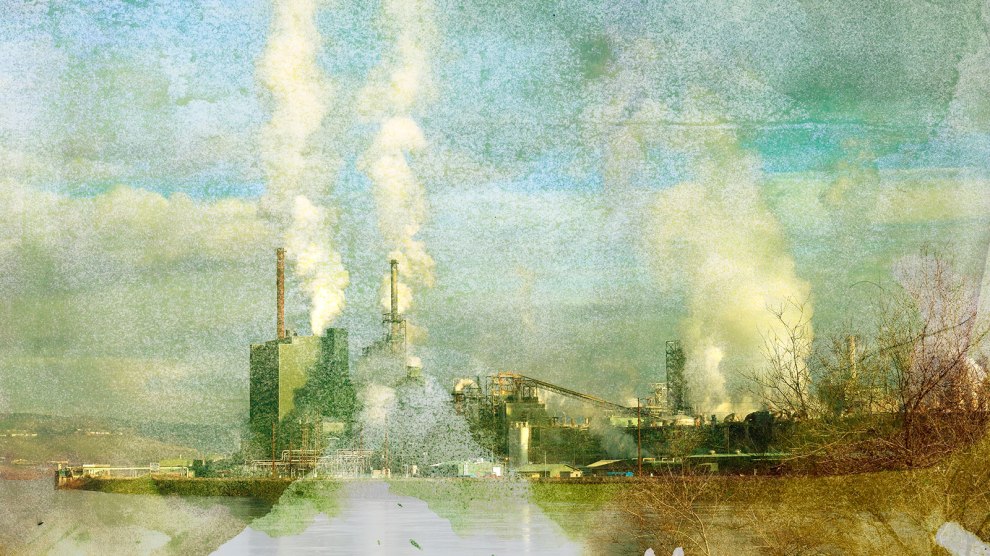
The burning of black liquor, a byproduct of paper mills, is considered a type of renewable energy in some states, including Maryland.
Grist/Education Images/UIG/Getty Images
The majority of states are following through on their promises to increase renewable energy, says Indiana University’s Carley. These policies have been particularly effective in the mid-Atlantic. The RPS has helped drive demand for renewables like wind energy in the PJM region, an area that includes states like Maryland, Delaware, and Pennsylvania, says Andrew Gohn, American Wind Energy Association eastern state affairs director.
In states with access to plentiful wind and solar, RPS have been put to work to transition to an energy mix that’s cleaner. Hawaii has pledged to achieve 100 percent renewable energy by 2045, with less use of polluting sources than the average state, according to the Food and Water Watch report.
Like many other policies, RPS are imperfect. “There are a few leaks in the roof, no doubt about it,” says Mike Tidwell, director of the nonprofit Chesapeake Climate Action Network, of Maryland’s policy. “One is trash incineration.”
Early last February, two bills were introduced in the Maryland Legislature to strengthen and clean up the state’s RPS. Both aimed to increase the state’s goals for renewable energy production from the current target of 25 percent by 2020. One would have brought the state to 50 percent renewable by 2030; the other to 100 percent by 2035. Both would have eliminated trash incinerator subsidies—and the more ambitious bill would have reserved “renewable” status solely for solar, wind, small hydroelectric, and “ocean energy,” a category that includes sources like wave and tidal energy.
Neither bill went anywhere before the end of the April session, but backers are optimistic that legislation might move forward in the next one, beginning in January 2019. State Sen. Brian Feldman, who sponsored one of the two bills, thought they undercut each other, so he hopes to fold the two policies into one to consolidate support.

In 2016, then-EPA Administrator Scott Pruitt referred to the burning of biomass, such as trees, as “carbon neutral.”
Grist/Universal Images Group/Getty Images
Down the street from the incinerator in Baltimore, James Alston also wants to see incineration removed from the state’s RPS. His family has lived in Westport since the 1850s, and his parents were factory workers in the area. Unemployment is high in his neighborhood, although he doesn’t know anyone in his community who works at the Wheelabrator plant.
In any case, he says, it’s not enough to justify the human cost of the incinerator. “I think it should be taken out of the renewable energy portfolio,” he explains. “Investment should be put in other facilities that don’t adversely affect human beings.”
In its statement, Wheelabrator says that incinerators like the one near Alston’s home are key to solving America’s waste problem since they divert materials headed to the landfill for energy generation. Waste-to-energy offsets the need for fossil fuels and decreases methane generation from landfills, the company points out.
Alston would prefer a greater focus on reducing waste, and maybe the addition of a recycling facility in his neighborhood that might create jobs for local residents. “I don’t know where people’s priorities are—businesses and our political folks—I really don’t know,” he says. “If I was in their seat, that facility would definitely not be there.”
